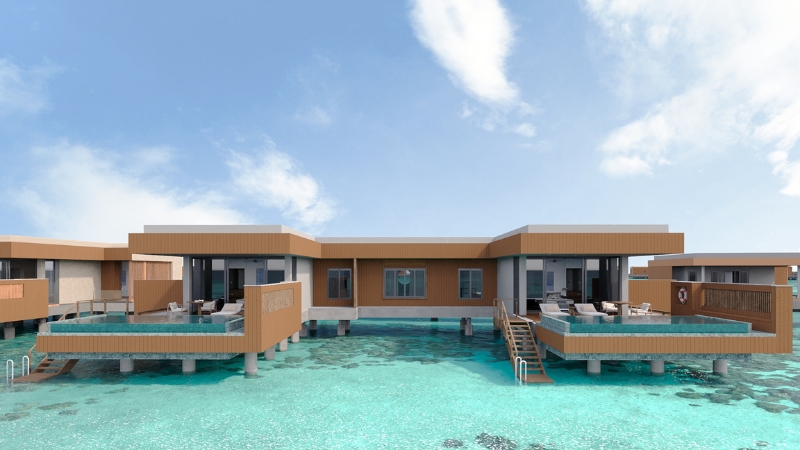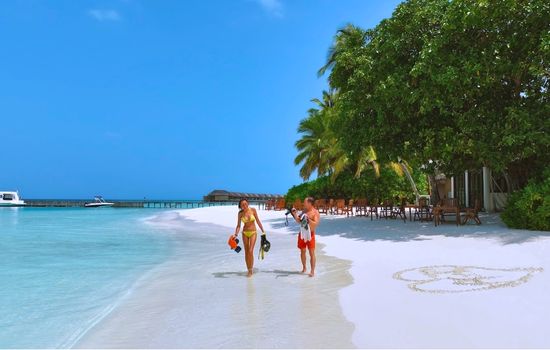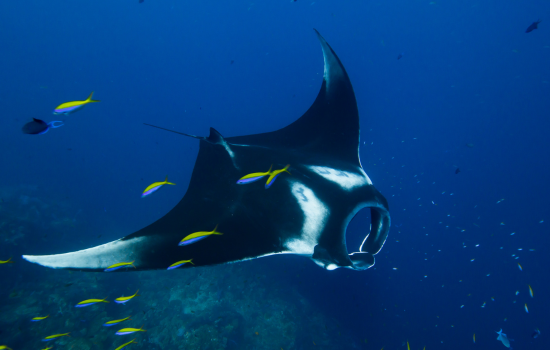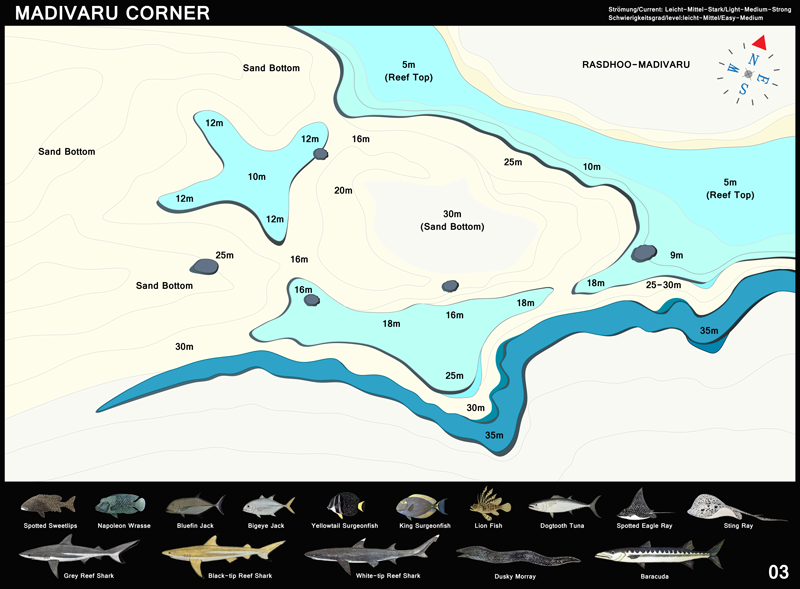Are you looking for some exciting adventures to try during your visit to Maldives? You are on the right article. Veligandu is a top romantic beach resort in the Maldives where you can be as relaxed or as active as you like. Veligandu offers plenty of adventures within the island itself, but if you desire to explore more, here are six of the top recommendations by the Veligandu team. These Must-Visit wonders are just 5 minutes from Veligandu.
- The Manta Cleaning Station
- Finding Hammerhead Sharks
- Wonder Rock Expedition
- Turtles Encounter
- The sea anemones – Finding Nemo
- Dance with the Dolphins under the sunset hues
1. The Manta Cleaning Station:
A large congregation of Manta Rays can be found at The Manta Ray Cleaning Station located just 200 meters northwest of Veligandu, reachable by a 3-minute boat ride. This easily accessible manta sighting spot suits all levels of snorkelers and divers.
Read more on Manta Cleaning Station »
2. Finding Hammerhead Sharks
Diving in Hammerhead Shark Point is an adrenaline-filled deep blue dive experience. This is an adventure only suitable for passionate, advanced scuba divers with excellent buoyancy.
The Madivaru Corner, world-famous Hammerhead Shark Point, is just a 3-minute boat ride from Veligandu. Here, mostly seen are Scalloped Hammerhead sharks traveling in schools. Occasionally, Great Hammerhead Sharks are also spotted. These giant sharks are sighted all year round at a depth of 30 meters. The best time to spot them is early morning, before sunrise; particularly from December to April. The diver must hover in the deep and wait patiently for the hammerheads to appear from the depths.
Tip: A plethora of blue plankton is a surefire sign that the Hammerhead sharks are nearby. Hammerheads pose no threat to divers and feed in deeper waters at night.
View this post on Instagram
3. The Sea Anemones – Finding Nemo
The fluorescent sea anemone with tentacles is a trendy spot for vibrant clownfish to hang out. Visit the sea anemones to find the clownfish-Nemos hiding in the Veligandu house reef and at Madivaru Corner. The Madivaru Corner is just a 3-minute boat ride from Veligandu. The good news is that you can see them any time of the year, day and night.
View this post on Instagram
4. Searching Turtles
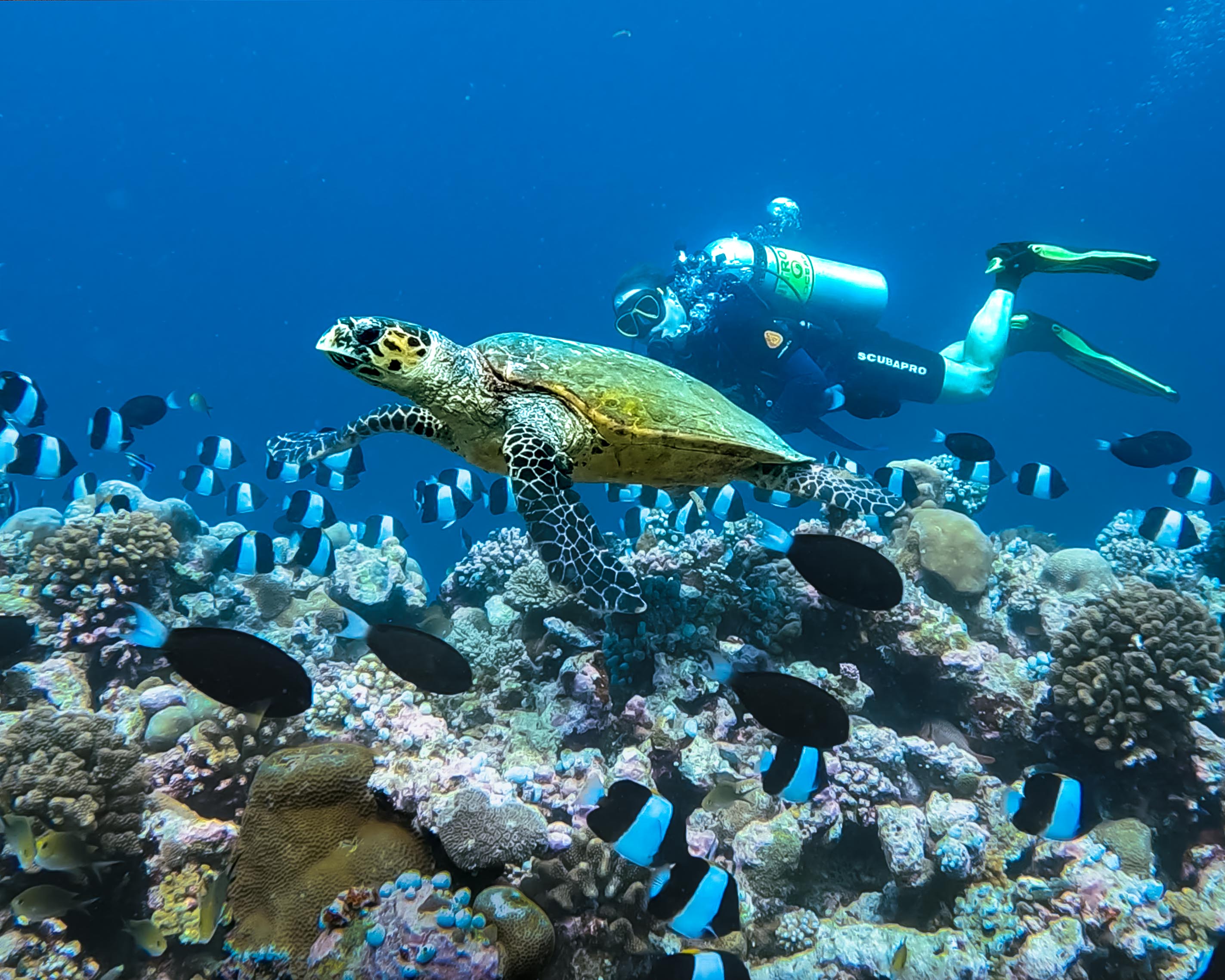
The turtle reef is on the east side, between Madivaru Island and Veligandu. Sometimes there is a nice ocean current making it very suitable for drift dive. There is no specific time to spot the turtles. However, there is a high chance of spotting turtles from November to April.
Tip: A plethora of jellyfish, sponges, and seagrass is a surefire sign that a turtle is nearby. Batfish are often seen around turtles because they love to feed on sea turtle poop.
5. Wonder Rock Snorkeling Expedition
The Wonder Rock is a twin coral rock formation in the crystal-clear lagoon of the breathtaking sandbank, Madivaru Finolhu. You can reach this wonder in 5 minutes via a speedboat from Veligandu. Here you are guaranteed to find Bluestripe Snapper, Lionfish, Moray eel, Anemone fish, Blue Surgeonfish, Glassfish, and many more colorful fishes. Often our snorkelers have spotted turtles and stingrays here. Our expert team member will be your snorkel buddy and guide you throughout the exploration. This fascinating expedition is suitable for beginner to advanced-level snorkelers.
6. Dolphin Sighting and Dolphin Cruise
Join the Sunset Cruise and dance with the Dolphins under the sunset hues on a traditional Dhoni.
The possibility of seeing dolphins are all year round but the best time is during or right before sunset between November to April when the sea is calm. The likelihood of seeing dolphins in the open ocean depends on the weather. The dolphins tend to hide if the ocean is rough and in June to August, the dolphins tend to hide away in the deep sea.
There are two to three spots around Veligandu where you can spot an abundance of dolphins swaying and twisting. The dolphin show starts around 6 pm and is 3-5 minutes from Veligandu.
Don’t miss out on the opportunity to observe these majestic creatures and unique experiences in their natural habitat. Most importantly, don’t forget to capture all your moments for your adventure memory book.
Let’s say you don’t have a GoPro, this is the moment we say options are limitless and the choice is yours. You can either;
Use your phone with an underwater cover – you can find the water-resistance covers in the Veligandu Gift Shop
Buddy with one of our professional photographers
We love the sea. It brings the most beautiful feeling of connection. Do you feel the same? It is also one reason why so many of you are visiting us. It is also one reason why we have frequent explorers from all around the world.
Remember, you have never completed your visit to Veligandu until you have explored these wonderful wonders near the island.
Note:
- These are wild animals in their natural habitat and there is a chance that they will not be found.
- The Maldives bans all forms of shark and turtle fishing.
Visiting Veligandu?
The island will reopen on November 1, 2024. Contact reservations@veligandu.com for future reservations.
When the resort reopens, guests can directly access the house reef to see turtles from their villa or islands beach by taking an excursion with Veligandu or with the Veligandu dive centre.


